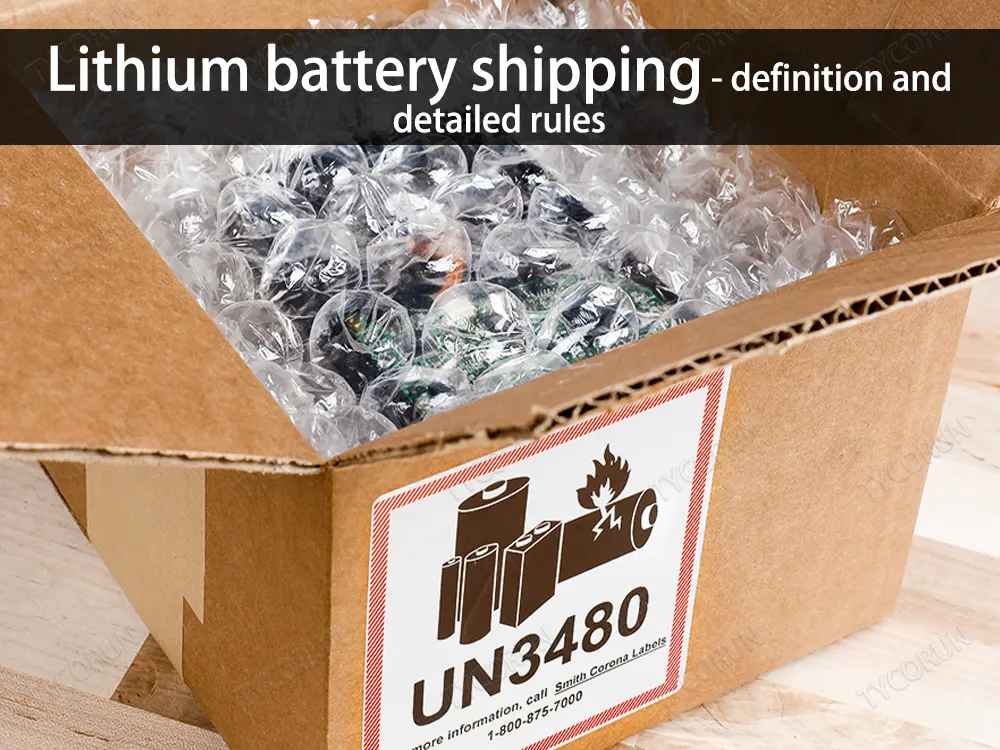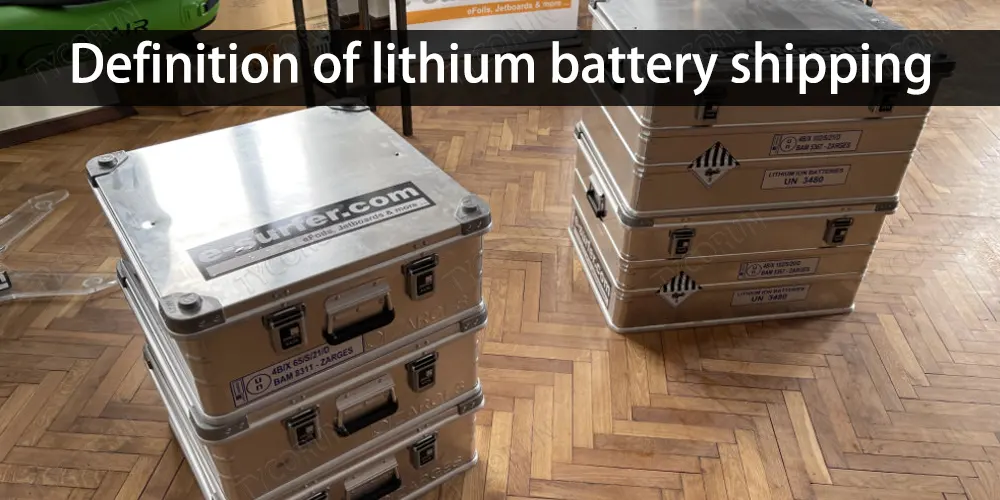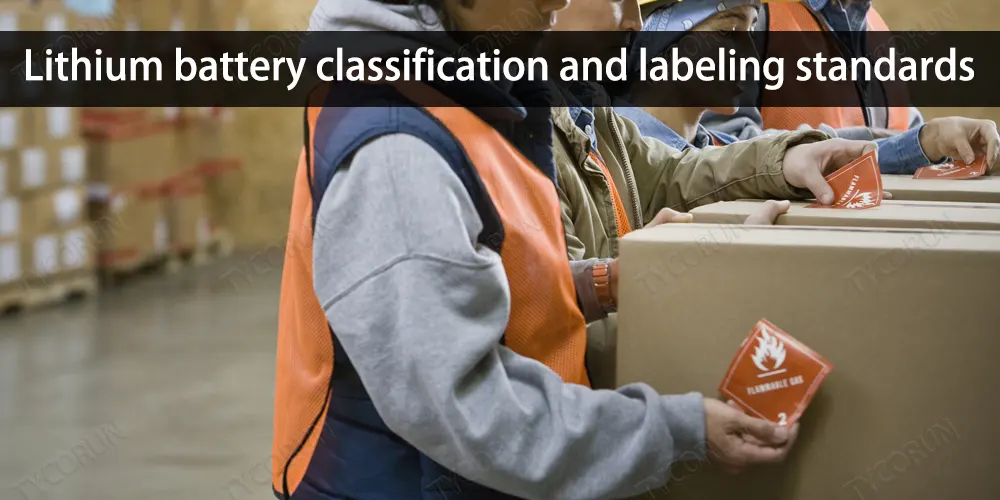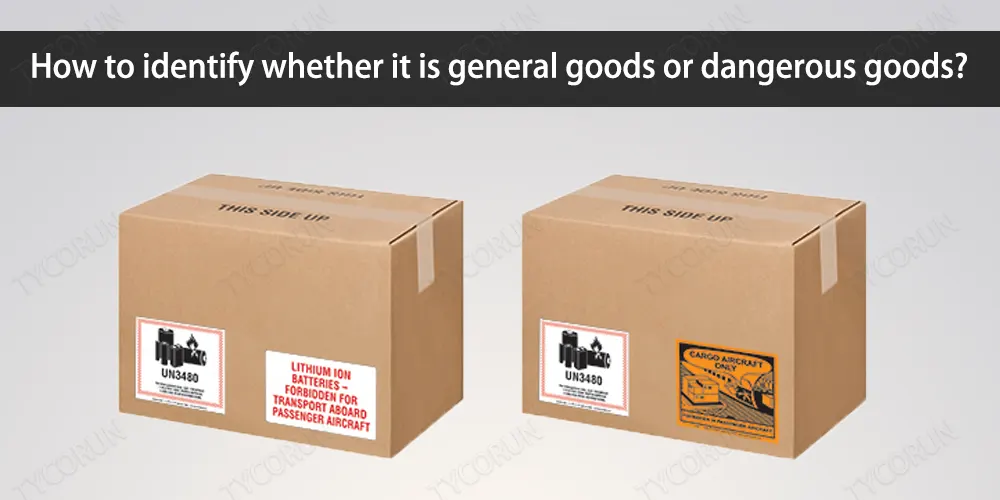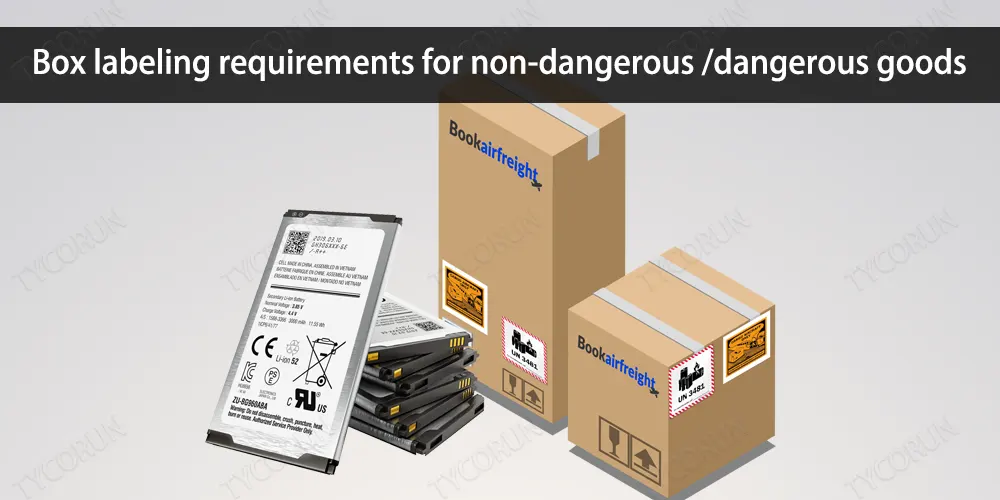Home » lithium ion battery knowledge » Lithium battery shipping – definition and detailed rules
Lithium battery shipping - definition and detailed rules
All kinds of goods add a bit of danger to the safety of the transportation. Among them, the export of goods with batteries is the most common, so the transportation of such goods and the safety of lithium battery shipping have also drawn attention.
In recent years, accidents of goods with batteries on fire have occurred from time to time. In order to ensure the safety of goods transportation, the customs department has also begun to increase supervision and inspection. So how can goods with lithium battery get shipped in compliance and safely?

Definition of lithium battery shipping
From the definition of “International Maritime Dangerous Goods Transport Rules”, as long as it is a lithium battery, regardless of the power and capacitance, it is included in the ninth category of dangerous goods. The qualification documents that need to be provided for lithium battery shipping are MSDS, UN38.3, appraisal report on cargo transportation conditions, and dangerous package certificate.
MSDS
MSDS is the abbreviation of Material Safety Data Sheet. It is a comprehensive regulatory document on chemical characteristics provided by chemical production, trade, and sales companies to downstream customers and the public according to legal requirements. There is no strict validity period. With the update of regulations, the content must be updated with MSDS and the old version will be invalid.
UN38.3 test report
UN38.3 test report, according to the relevant provisions of the International Air Transport Association’s “Dangerous Goods Regulations”, each airline is applicable to regulations for products such as mobile phone batteries, laptop batteries, power tool batteries, walkie-talkie batteries, camera batteries, and remote control toy batteries.
For products containing potassium batteries, the testing requirements are UN38.3 in the “United Nations Manual of Tests and Standards for the Transport of Dangerous Goods”.
UN38.3 is mainly used to simulate the air transport environment and possible dangerous situations. The tests include:
- High simulation test
- Thermal test
- Vibration test
- Impact test
- External short circuit test
- Crash test
- Overcharge battery test
- Forced discharge test
Cargo transportation conditions appraisal report
That is, to make evaluations and suggestions on the suitability of the goods for transportation including lithium battery shipping.
Dangerous package certificate
The dangerous package certificate is divided into two parts, one is the performance certificate whose full name is “Packaging Performance Inspection Result Sheet for Entry-Exit Goods”, and the other is the use certificate, and its full name is “Appraisal Result Sheet for Outbound Dangerous Goods Transport Packaging Use”.
With the packing performance sheet, you can go to the Commodity Inspection Bureau for commodity inspection and change the packing use sheet, which is also called dangerous package certificate.
Lithium battery classification and labeling standards
According to the requirements of IMDG CODE, lithium batteries can be divided into four categories: UN 3090, UN 3091, UN 3480, and UN 3481.
| Classification of lithium battery goods | Packing category | UN classification | UN definition |
|---|---|---|---|
| Pure lithium ion battery | P1965 | UN3480 | Pure lithium ion batteries shipped separately |
| Lithium ion batteries packed with equipment | P1966 | UN3481 | Pure lithium ion batteries packed with equipment or installed in equipment |
| Lithium ion batteries installed in equipment | P1967 | UN3481 | Pure lithium ion batteries packed with equipment or installed in equipment |
| Pure lithium metal battery | PI968 | UN3090 | Pure lithium metal batteries shipped separately |
| Lithium metal batteries packed with equipment | P1969 | UN3091 | Pure lithium metal batteries packed with equipment or installed in equipment |
| Lithium metal batteries installed in equipment | P1970 | UN3091 | Pure lithium metal batteries packed with equipment or installed in equipment |
PS: UN 3171 is applicable to vehicles powered by lithium metal or lithium ion batteries. “Vehicle” represents for a self-propelled device for the carriage of one or more people or goods.
Such as cars, motorcycles, scooters, three- and four-wheeled vehicles or motorcycles, trucks, locomotives, bicycles and other vehicles with motorized pedals (including self-balancing scooters or vehicles not equipped with a seat), wheelchairs powered by power wheels battery, lawn tractors , self-propelled agricultural and construction equipment, ships and aircraft.
How to identify whether it is general goods or dangerous goods?
As long as lithium battery shipping is considered as dangerous goods shipping, it is also necessary to determine whether the lithium battery product is restricted or non-restricted.
Non-dangerous goods
The power of a single lithium battery is not more than 20WH, and the battery pack is not more than 100WH for pure battery products. Such products must have a battery fireproof label on the outer box packaging or on the product, and the lithium battery shipping inspection must have the MSDS certificate + marine transportation identification report for each type of battery.
Dangerous goods
The power of a single lithium battery is larger than 20WH, and the battery pack exceeds 100WH for pure battery products. MSDS certificate + UN38.3 certificate + dangerous package certificate + marine transportation identification report + 9 categories of dangerous goods labels + United Nations label + UN carton packaging are required for lithium battery shipping.
Box labeling requirements for non-dangerous /dangerous goods
| Lithium battery | ||
|---|---|---|
| Lithium content of lithium metal battery: cell or single-cell battery ≤ 1g, multi-cell battery ≤ 2g. Lithium-ion battery: cell or single-cell battery ≤ 20Wh, multi-cell battery ≤ 100Wh | Lithium content of lithium metal battery: cell or single-cell battery > 1g, multi-cell battery > 2g. Lithium-ion battery: cell or single-cell battery > 20Wh, multi-cell battery > 100Wh | Vehicles or equipment powered by wet batteries, sodium batteries, lithium batteries, and installed in the equipment during transportation |
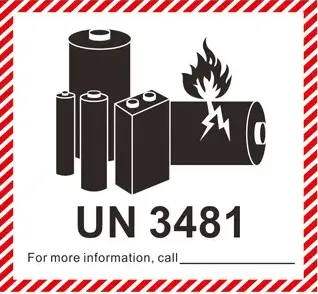 Lithium battery handling label
Lithium battery handling label
|
 9A dangerous goods label
9A dangerous goods label
|
 9 categories of dangerous goods label
9 categories of dangerous goods label
|
| NiMH battery | |
|---|---|
| Gross weight of a single cargo transport component ≥ 100kg | Gross weight of a single cargo transport component <100kg |
 9 categories of dangerous goods label
9 categories of dangerous goods label
|
/ |
| Lead-acid battery | |
|---|---|
| Failed the vibration, pressure difference, 55°C high temperature gurgling liquid test | Passed the vibration, pressure difference, 55°C high temperature gurgling liquid test |
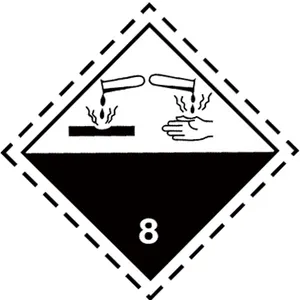 8 categories of dangerous goods label
8 categories of dangerous goods label
|
/ |
The specific labeling requirements are as follows:
- Lithium batteries that exceed the standard or power, or NiMH batteries that exceed 100KG must be labeled with 9A lable (dangerous goods warning signs have been printed on the packaging of products with dangerous package certificates, so there is no need to add additional stickers).
- As for the circumstances of multimodal lithium battery shipping, two kinds of labels can be attached, including non-restricted label and 9A label (such as sea railway, sea and land transportation)
- For lithium metal batteries without superpower and other lithium battery shipping, if the single cell is less than or equal to 20WH, and the battery pack is less than or equal to 100WH, should be attached with a square label.
- Dry batteries, NiMH batteries below 100KG and lead-acid batteries, etc. do not need to be labeled.
Requirements for lithium battery shipping
- Lithium batteries must pass the UN38.3 test requirements and the 1.2-meter drop package (Class II dangerous goods packaging) test.
- Packages containing lithium batteries or battery packs must be marked with the lithium battery mark.
- When the lithium battery goods are delivered to the ship for lithium battery shipping, the 9A mark must be posted on the package.
- Each cell and battery pack must have a safety vent or be designed to prevent crushing under normal accident conditions during lithium battery shipping.
- Each cell and battery shall be fitted with an effective means of protection against external short circuits.
- Each battery comprising several cells or series of cells connected in parallel shall be equipped with effective devices (such as diodes, fuses, etc.) necessary to prevent the danger caused by reverse current flow.
- The manufacture of batteries and batteries must have a high-quality management plan, and a copy of the plan can be provided in a timely manner when requested by the relevant authorities.
- Packages containing lithium batteries or battery packs must meet the requirements for construction and testing in Chapter 6 of IMDG, and obtain inspection certificates.
- 9 Categories signs are used for cargo transportation components such as containers for lithium batteries.

